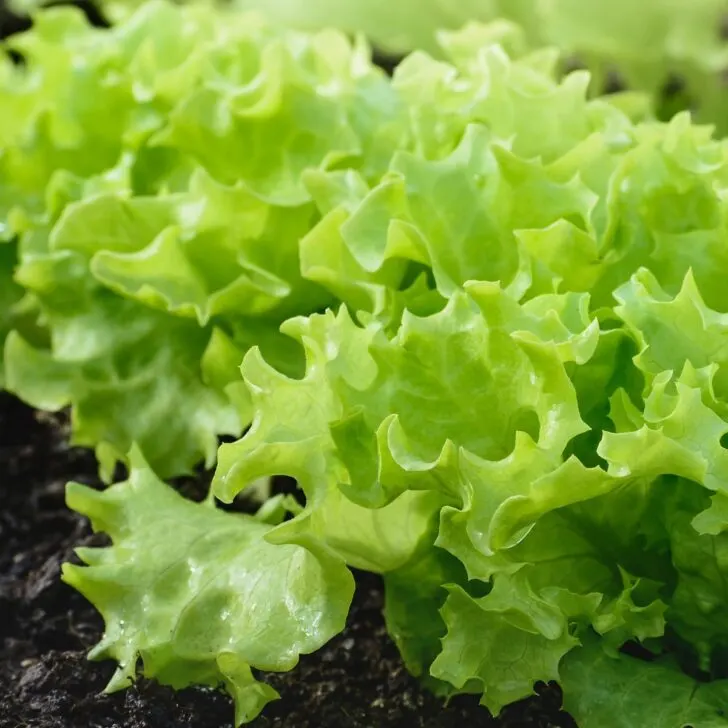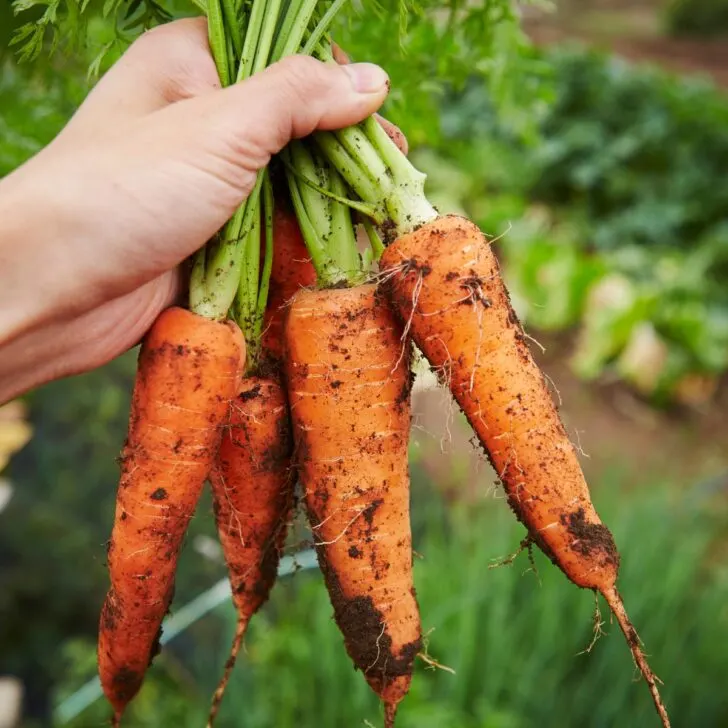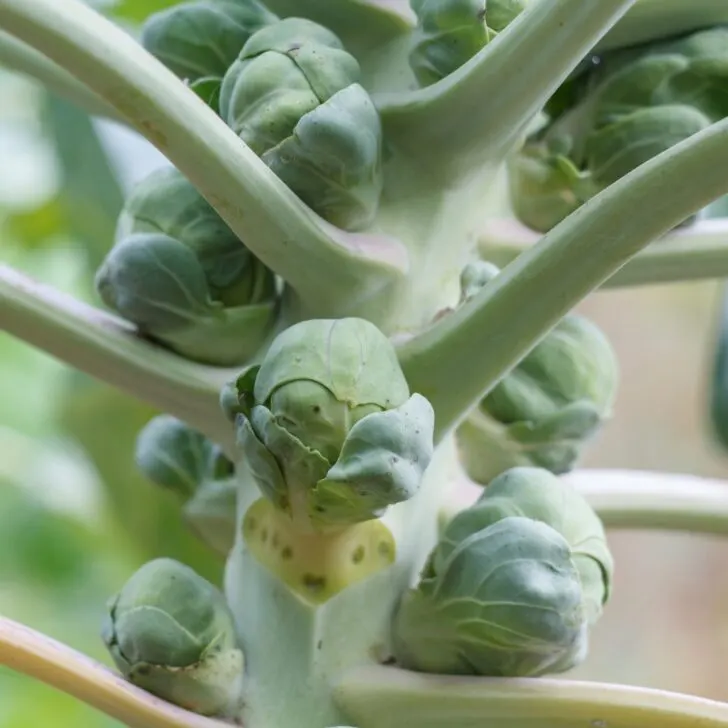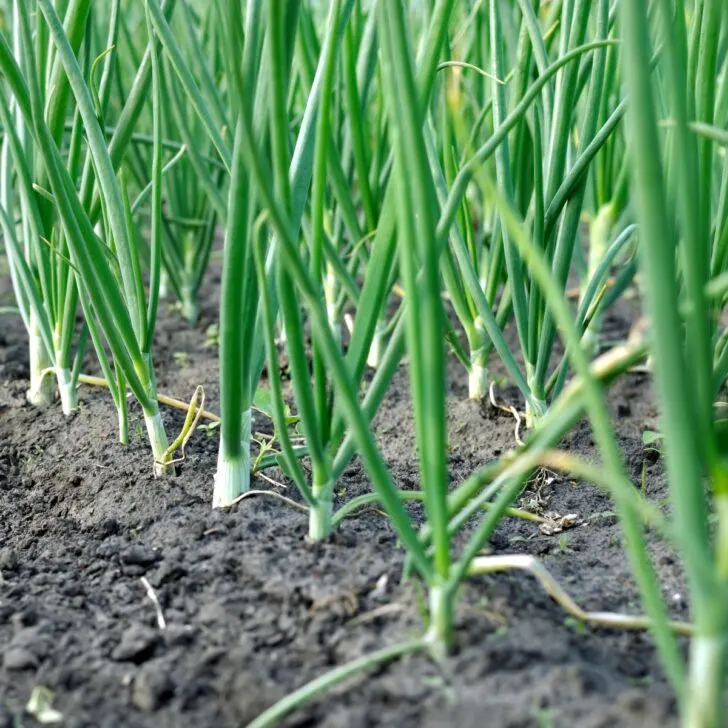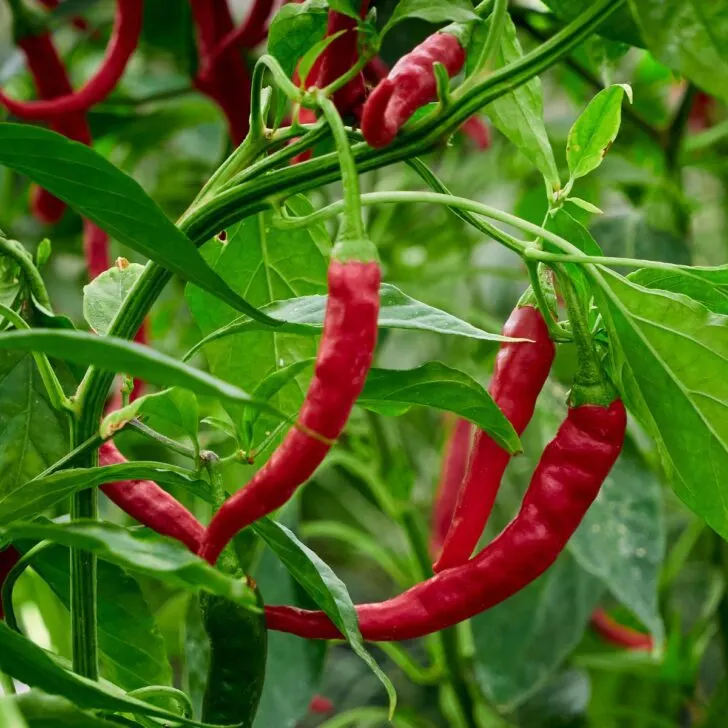Learn how to grow radishes from seed and enjoy these root vegetables fresh out of the ground every spring and fall!
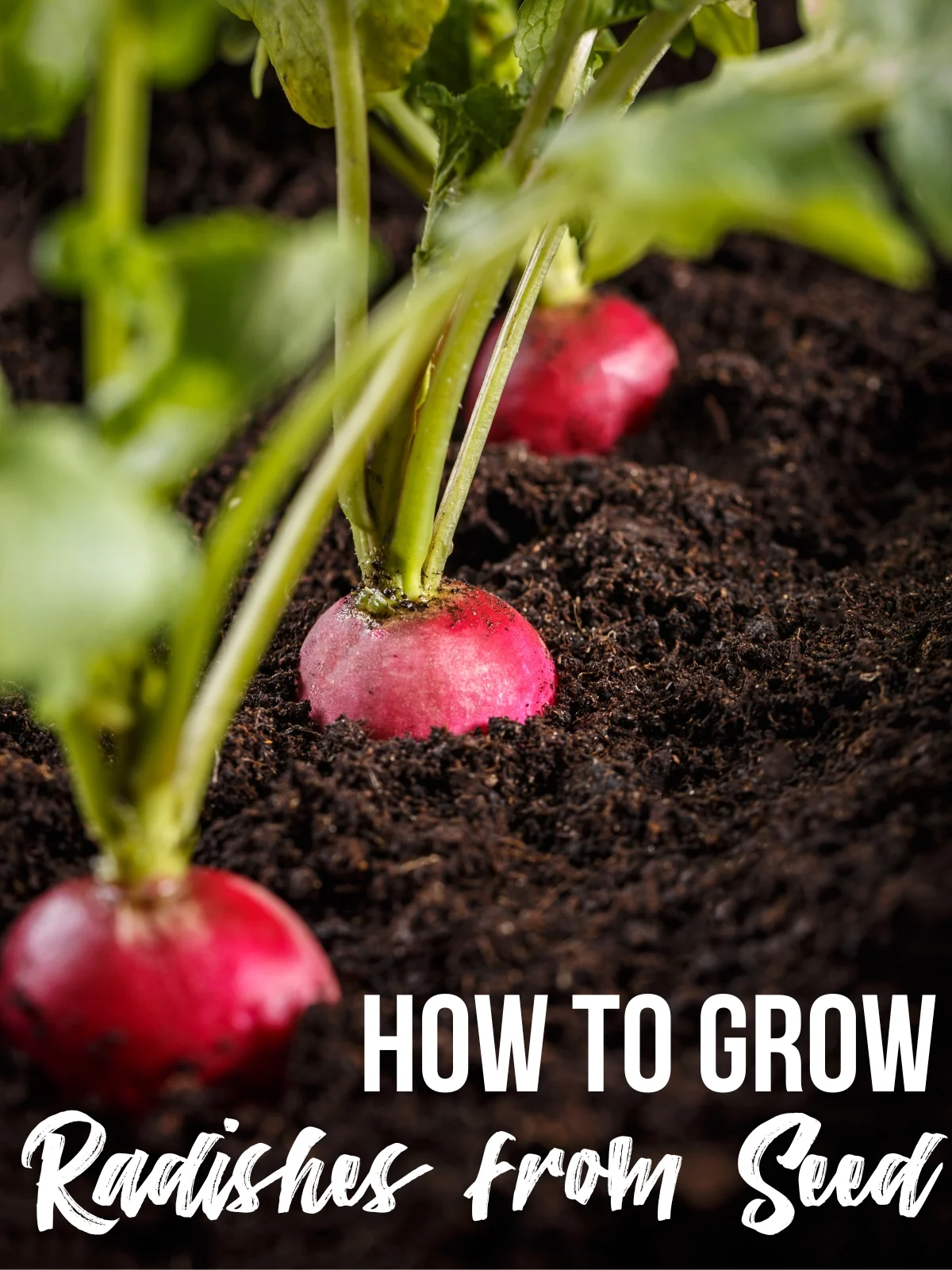
Radishes are one of the easiest vegetables to grow from seed. They can be ready to harvest in as little as 18 days, so you always have a fresh supply on hand for salads, tacos and more!
But there are a few things to keep in mind when growing radishes from seed. I'll guide you through the entire process, so you can enjoy almost instant results!
Let's get growing!
This post contains affiliate links for your convenience. Purchases made through these links may earn me a small commission at no additional cost to you.
Radish Varieties
From the classic red globe-shaped ones like 'Cherry Belle' to the elongated white 'Daikon', and even the unique watermelon radish with its green exterior and pink interior, there's a radish for every palate. Each variety has its own growth time and flavor profile.
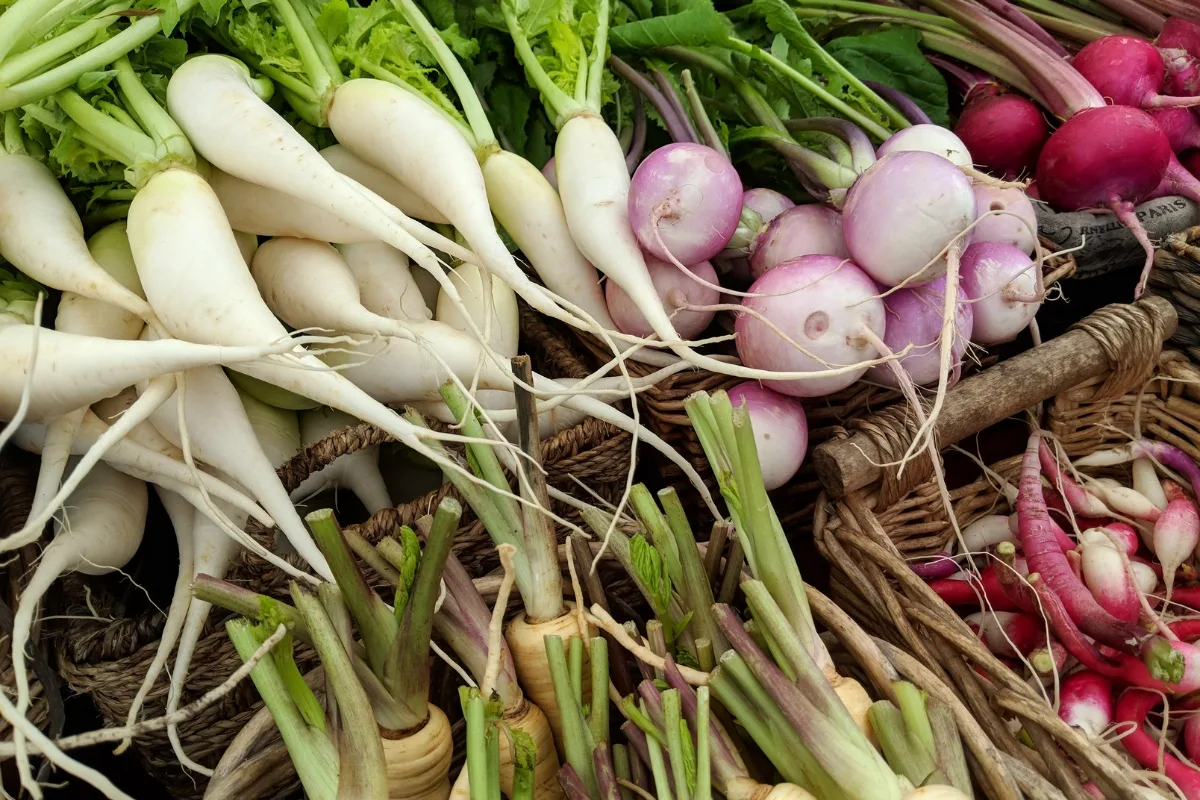
Also, consider your local climate and soil type. While radishes are pretty adaptable, some varieties thrive better in certain conditions. For instance, if you're in a cooler climate, 'Champion' or 'French Breakfast' might be your best bet. On the other hand, if you have a longer growing season, Daikon could be a great choice.
This fall, I'm growing Crunchy King radishes from seed. This variety can stay in the ground longer than others, so you can harvest just a few as needed. Most radishes need to be pulled as soon as they're ready, or they'll get tough and won't taste as good.
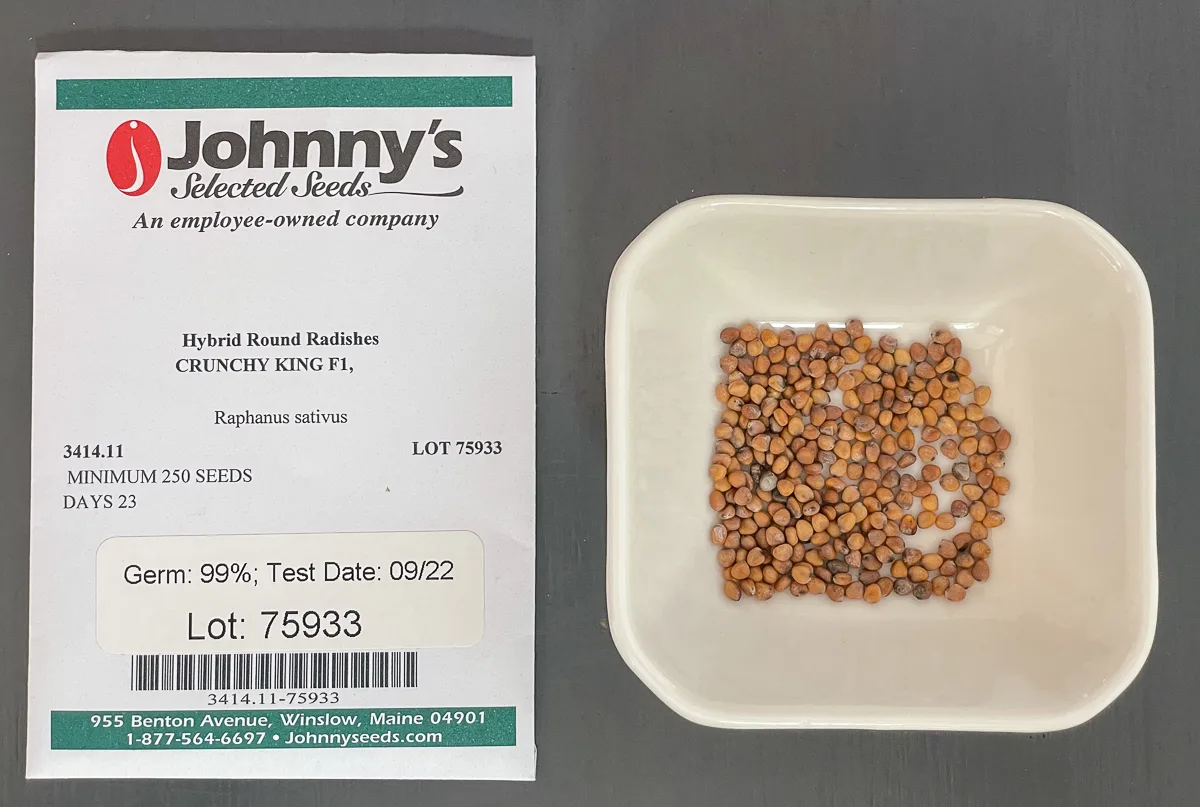
How to Plant Radish Seeds
It's best to direct sow radish seeds where you plan to grow them to maturity. While you may be tempted to start them indoors and transplant them after they sprout, their roots are sensitive and you could damage the bulb itself. Plus, they grow so fast, there's not much time between sowing and harvesting!
Preparing the soil
Radishes prefer a well-draining soil that's loose and free of large clumps. This allows their roots to expand easily. A sandy loam is ideal, but you can always improve your soil with compost or other amendments.
Clear the garden bed or container of any weeds or debris. Rocks and roots can inhibit the growth of your radishes and create weirdly shaped vegetables.
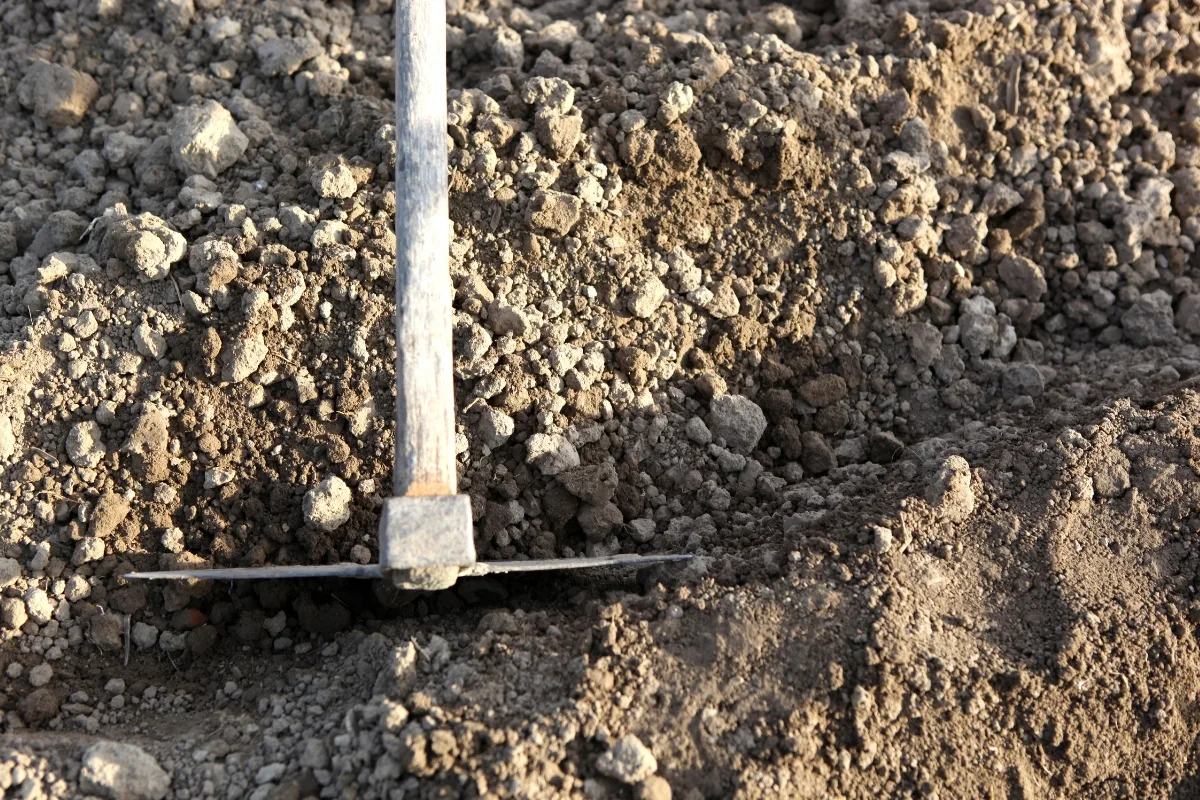
Next, if your soil is heavy or clayey, consider mixing in some organic compost or well-rotted manure. This not only lightens the soil texture but also adds valuable nutrients.
A quick pH test can be helpful too. Radishes prefer slightly acidic to neutral soil, with a pH of 6.0 to 7.5. If your soil is too acidic, adding some garden lime can help balance it out. If it's too alkaline, a bit of sulfur might do the trick.
Lastly, ensure your garden bed or container has good drainage. Radishes can rot in waterlogged soil. If you're using a container, make sure it has drainage holes and use well-draining potting soil. I'm planting my seeds in grow bags, so the water flows right through the fabric bottom.
Planting radish seeds
Start by making small holes or a shallow trench in the soil. For most radish varieties, a depth of about ½ inch is perfect. If you're planting larger varieties like 'Daikon', you might want to go a tad deeper.

Plant the seeds about ¾" to an inch apart. It's ok if they're a little close together. After they sprout, you can thin them so they have enough room to grow without competing for space.
Once the seeds are in the soil, cover them gently. Pat the surface lightly to ensure good seed-to-soil contact. This helps the seeds absorb moisture and germinate effectively.
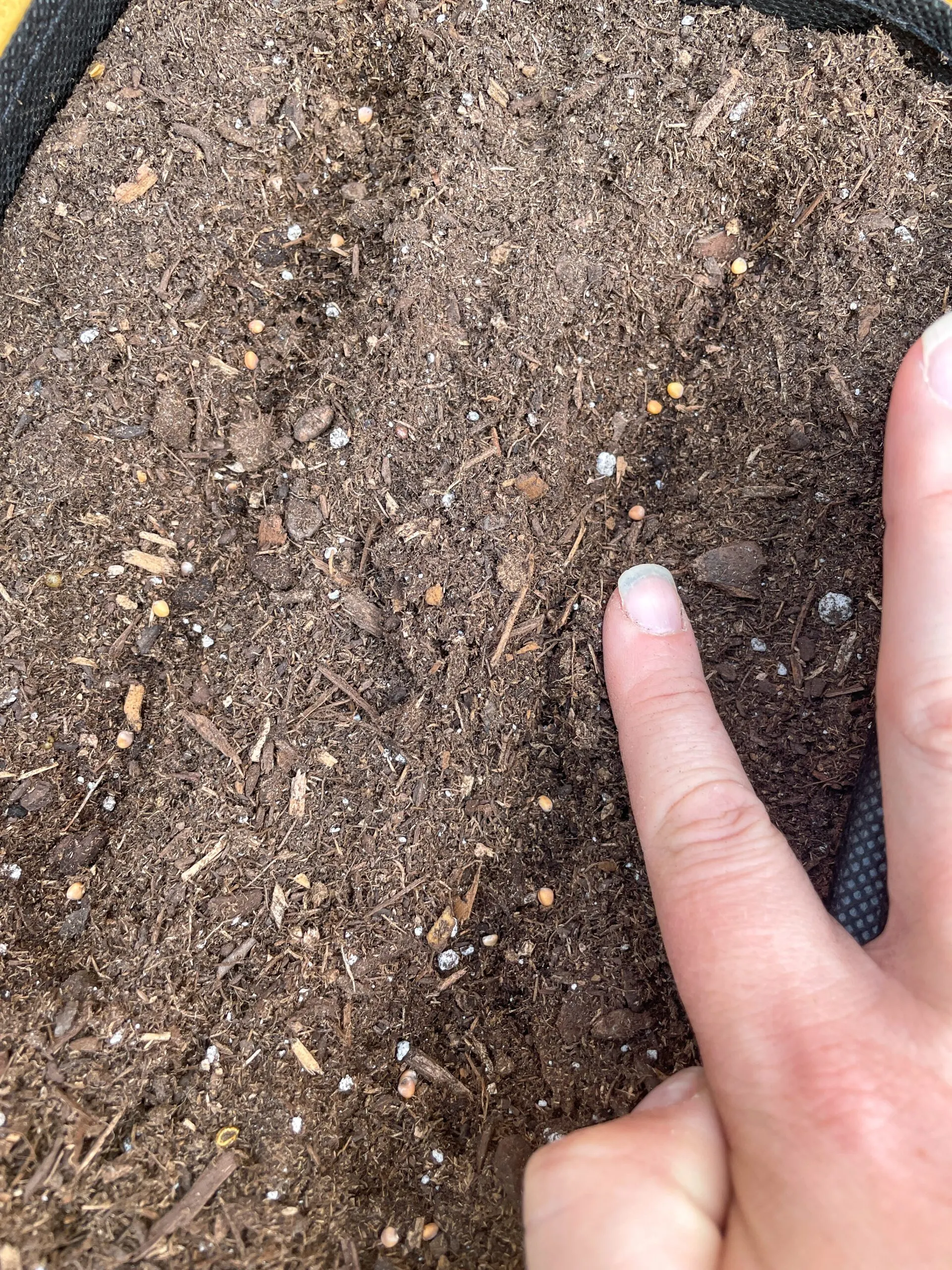
Watering is the final step in the planting process. Using a gentle spray or a watering can, moisten the soil thoroughly but without flooding it. The goal is to keep the soil consistently moist, especially during the first few days when the seeds are germinating.
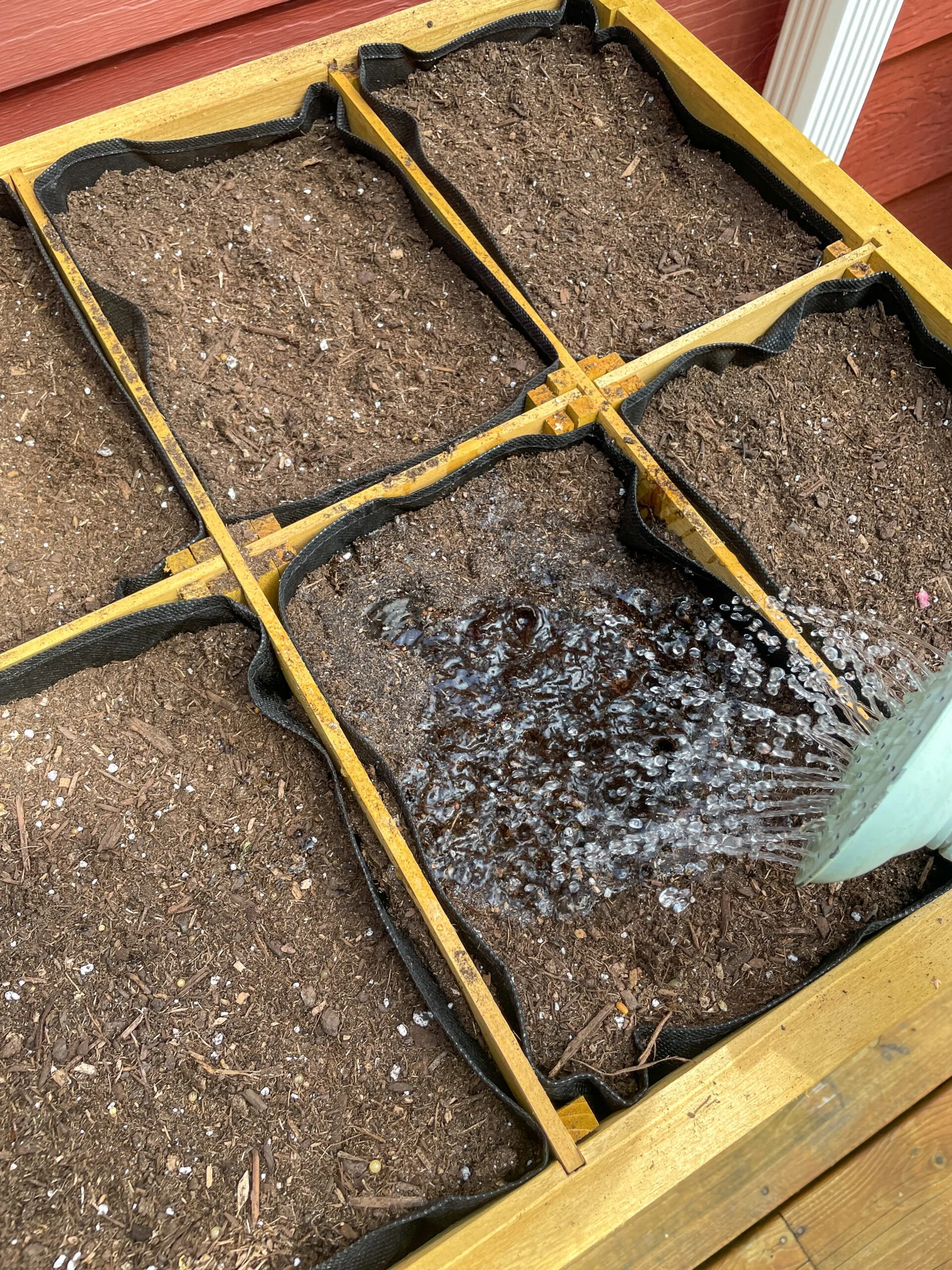
Caring for radish seedlings
It only takes a few days to see those little green shoots popping out of the ground! This is what my radish seedlings looked like just three days after planting.

But your work isn't done yet! Here's how to care for your radish seedlings so they form bright, beautiful bulbs!
Thinning
Remember when we talked about spacing during planting? If you had great germination rates, you probably have too many seedlings too close together.
When seedlings are about 2 inches tall, it's time to thin them out. Gently pull out or clip the smaller seedlings. This might seem a bit harsh, but it ensures that each radish has enough room to develop a full bulb without deforming.
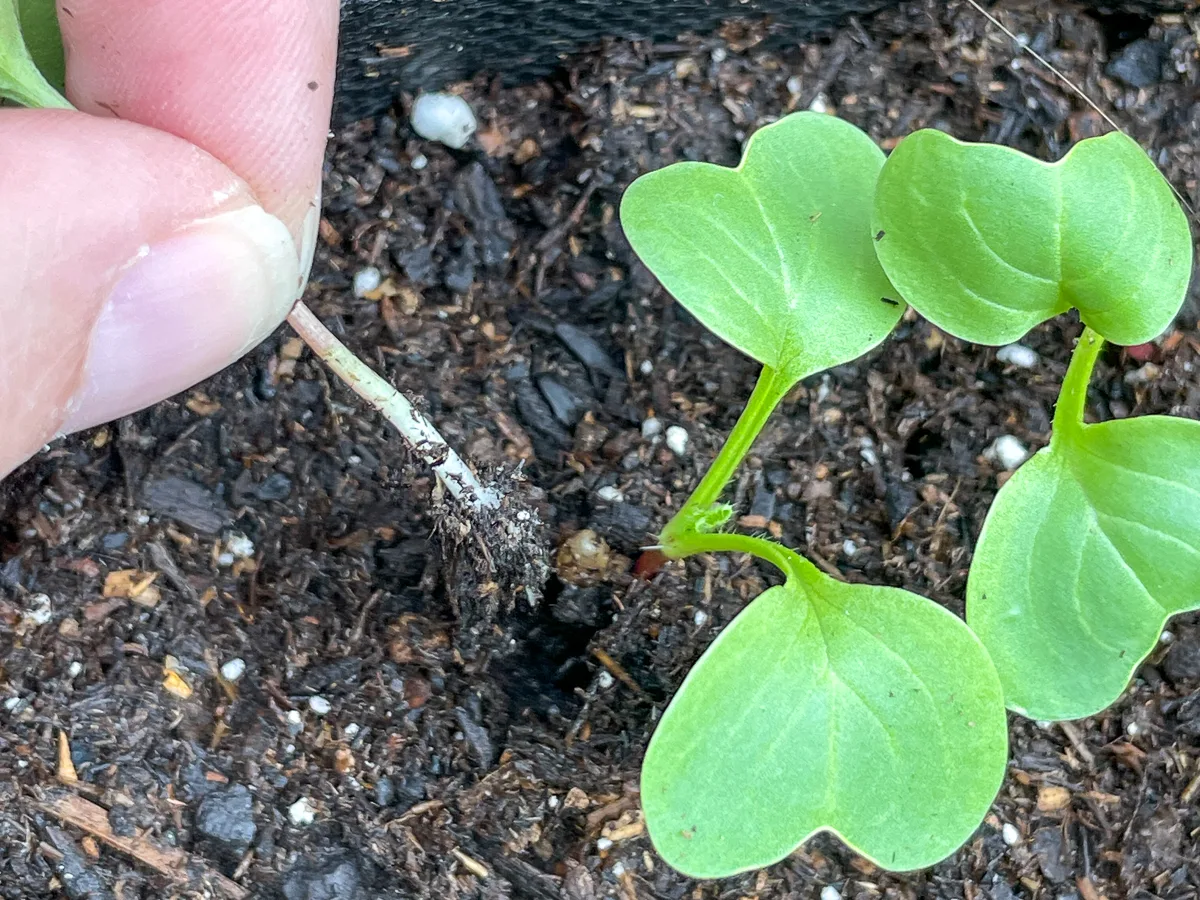
Watering
Radish seedlings love consistently moist soil. It's essential to water them regularly, especially in dry conditions.
However, be careful not to overwater. Soggy soil can lead to root rot. A good rule of thumb is to water when the top inch of soil feels dry to the touch.
Pests
Keep an eye out for pests like flea beetles, root maggots, and aphids. If you notice small holes in the leaves, it's likely the work of flea beetles. Floating row covers can help keep these pests at bay.
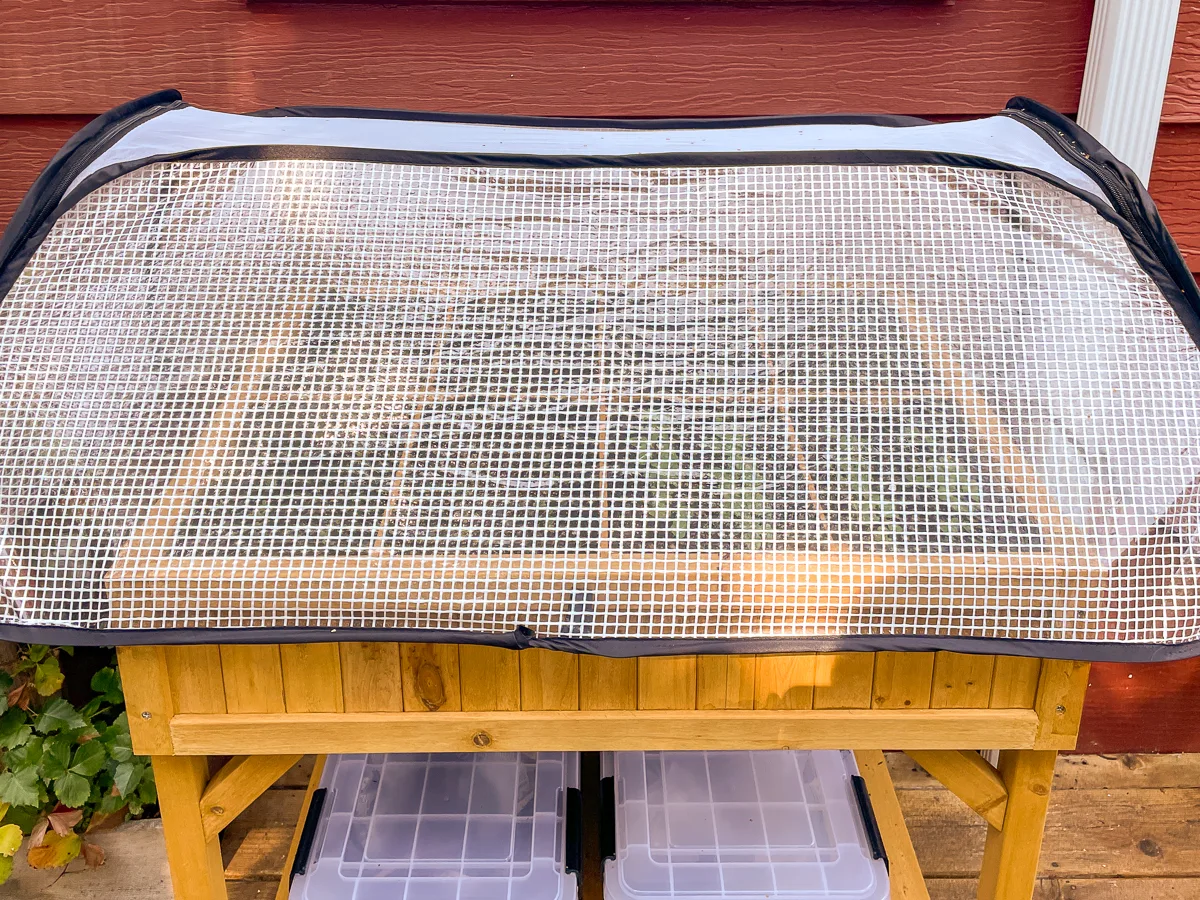
We have a roving band of squirrels that always dig in my garden looking for places to hide the walnuts from our tree. I noticed some digging in the corner of this raised bed, so I put a cover over it to discourage them. It has an open mesh top so it doesn't trap heat inside, which can cause premature bolting.
Fertilizer
Radishes are low-maintenance when it comes to feeding. If you prepared your soil well at the beginning, there's no need to add additional fertilizer. In fact, too much nitrogen can lead to lush leafy growth at the expense of the radish bulb.
Harvesting radishes
Harvesting radishes is one of the most satisfying gardening tasks. There's nothing quite like pulling a fresh, crunchy radish out of the soil. Here's what to look for!
Size
One of the first indicators that your radishes are ready is their size. Depending on the variety, a mature radish can be anywhere from the size of a marble to as big as a tennis ball.
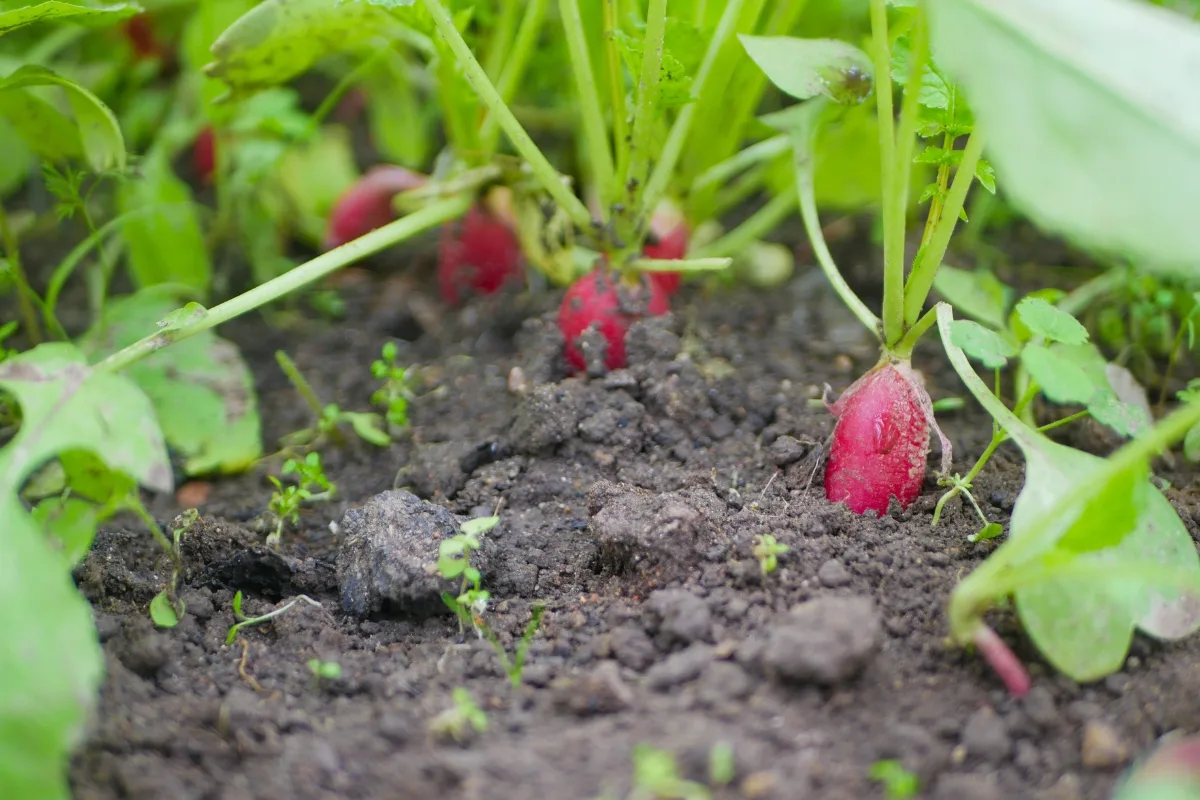
Radishes will pop out of the ground slightly as they grow, making it easy to see how big they've gotten. Harvest them when they get to the mature size for the variety you planted.
Time
The seed packet usually mentions the number of days to maturity. While this isn't an exact science, it gives a good ballpark figure. If it says 23 days, start checking your radishes around that time.
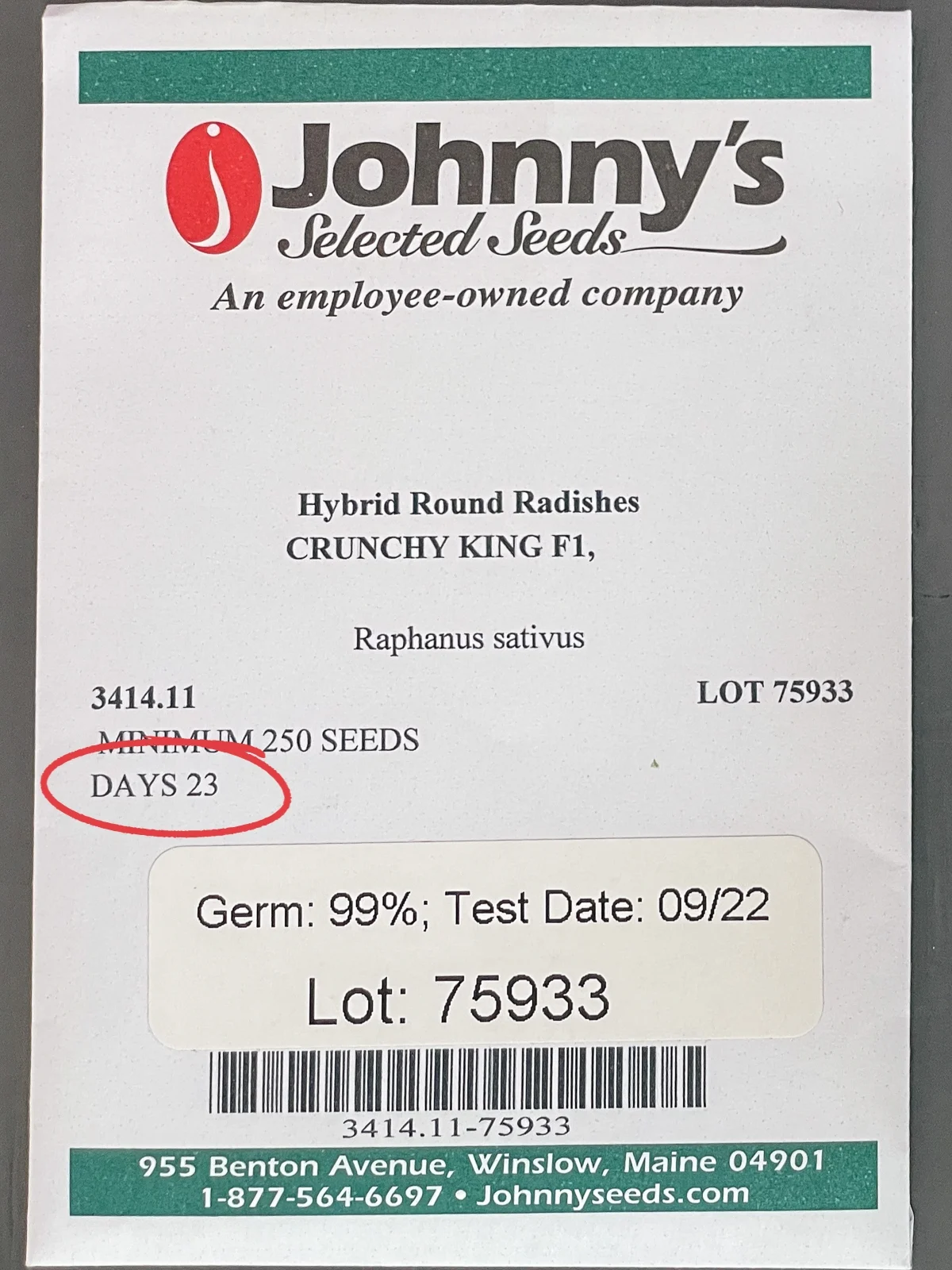
Tug test
Grasp the plant at its base and give it a gentle, yet firm tug. The radish should pop right out. If it resists, it might need a bit more time before it's ready for harvest.

Now that you know how to grow radishes from seed, you can plant a new crop every month and enjoy fresh, crunchy vegetables all season long!
Check out these other vegetables you can grow from seed!

